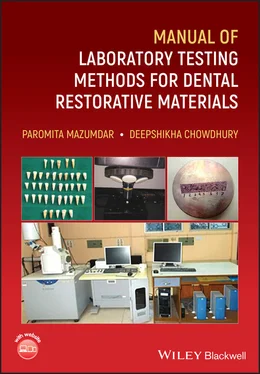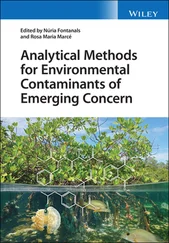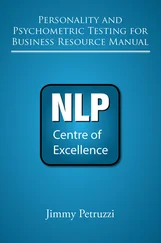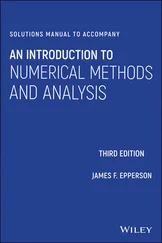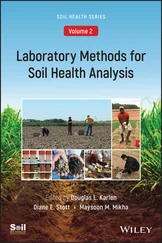Chapter 1consists of the assessment of various mechanical properties of dental restorative materials that are commonly tested such as tensile strength, diametral compression test, compressive strength, flexural strength, resistance to fatigue, hardness, elastic modulus, fracture toughness and bond strength. Chapter 2deals with the assessment of various physical properties such as surface roughness, water sorption, viscosity and flow, surface tension and wettability, microleakage, interfacial adaptation, film thickness, and radiopacity. Chapter 3provides an insight into isolation and identification of oral microflora including both the culture method and the molecular biology techniques. Chapter 4will give an idea about the assessment of biocompatibility of dental restorative materials which has been segregated based on the testing hierarchy. The different dimensions of color along with the different techniques of assessing colour of restorative materials has been detailed in Chapter 5. Chapter 6delves into various methods of simulation of the oral environment such as the simulation of saliva, temperature change in the oral cavity, masticatory forces, pH cycling, tooth brushing and periodontium without which translational research will be incomplete. Chapter 7provides an idea on biofilm in the oral cavity.
For researchers pertaining to dentistry or field of materials, the handbook will provide an insight into the materials used in dentistry, the properties studied, the methods used to study the properties and their respective advantages and disadvantages.
For the clinicians, this handbook will be one of its kind which will help to generate an interest and curiosity about the materials being used in individual practice.
In a nutshell, the manual on testing methods will be a helpful addition to any institute library or personal collection since this aspect of material science has never been explained before. A serious attempt at delving into the minds of young researchers has led to the conceptualization of the manuscript.
We sincerely hope the manual will add value to our intended readers.
Dr Paromita MazumdarDr Deepshikha Chowdhury
Our special thanks to Dr. Amit Roy Chowdhury, Professor, Aerospace Engineering and Applied Mechanics, Indian Institute of Engineering Science and Technology, Shibpur, West Bengal, India, for his guidance and suggestions.
We are grateful to Dr. Pallab Datta, Assistant Professor, Centre for Healthcare Science and Technology, Indian Institute of Engineering Science and Technology, Shibpur, West Bengal, India, for his priceless and benevolent guidance along with unstained co‐operation.
Our sincere thanks to Ms. Preeti Verma, Senior Research Scholar, Department of Botany, Calcutta University, West Bengal, India, for her valuable suggestions, excellent supervision, exceptionally able guidance and constant encouragement.
We are thankful to Ms. Deepanwita Chowdhury, Masters in Life Sciences, Mount Carmel College, Bengaluru, Karnataka, India for her cooperation and encouraging support.
Our heartfelt thanks to Ms. Loan Nguyen, Ms. Anupama Sreekanth and Ms. Tanya McMullin, John Wiley & Sons, United Kingdom for their immense contribution, guidance, suggestions and cooperation throughout the entire process of writing and publishing this manual.
We are grateful to our families, friends and colleagues for their moral support and constant encouragement which has helped us in accomplishing our work.
AbsorptionAbsorption of light takes place when matter captures electromagnetic radiation, converting the energy of photons to internal energy. Aerobic microbesmicroorganisms that can survive and grow in an oxygenated environment. AliquotA representative sample of a fixed proportion. Anerobic microbesmicroorganisms that do not require oxygen for growth. It may react negatively or die in the presence of oxygen. Assaythe testing of a material to determine its ingredients and quality. BiocompatibilityAbility of a material to elicit an appropriate biological response on a given application in the body. It is the quality of not having toxic or injurious effects on biological systems. Biofilmaggregate of microorganisms in which cells that are frequently embedded within a self produced matrix of extracellular polymeric substance adhere to each other and/or to the surface. CarcinogenicityThe ability or tendency of a substance to induce tumors (benign or malignant) and increase the malignancy. Commensalisma relationship between two organisms where one benefits but the other is neutral. Compressive StrengthMaximum stress a material can sustain under crush loading. Compressive StressCompressive force per unit area perpendicular to the direction of applied force. Contact angleAngle of intersection between a liquid and a surface of a solid that is measured from the solid surface through the liquid to the liquid/vapor tangent line originating at the terminus of the liquid/solid interface. Cyclic loadingRepeated or fluctuating application of forces in structural components. Cytotoxicitythe quality of being toxic to cells. Degree of conversionPercentage of carbon–carbon double bonds converted to carbon–carbon single bonds during curing to form a polymeric resin. DemineralisationLoss of minerals from the dental hard tooth tissues. Elastic Modulus (also modulus of elasticity and Young’s modulus)Stiffness of a material that is calculated as the ratio of elastic stress to elastic strain. Extraction ratioRatio of the surface area or mass of the test sample to the volume of the extractant used. It is used in biocompatibility testing of dental materials. Flexural strength (bending strength or modulus of rupture)Force per unit area at the instant of fracture in a test specimen subjected to flexural loading. Flexural stress (bending stress)Force per unit area of a material that is subjected to flexural loading. FlowRelative ability of a wax to plastically deform when it is heated slightly above body temperature. Fracture toughnessAbility of a material to absorb elastic energy and to deform plastically before fracturing; measured as the total area under a plot of tensile stress versus strain. Genotoxicitythe property of physical or chemical substances that damages the genetic information within a cell causing mutations, which may often lead to cancer. HardnessHardness is a measure of the resistance to localized plastic deformation induced by either mechanical indentation or abrasion. LABThe ‘L’ value for each scale indicates the level of light or dark, the ‘A’ value redness or greenness, and the ‘B’ value yellowness or blueness. All three values are required to completely describe an object’s color. Microfloracollective term for all microorganisms. MicroleakageThe flow of oral fluids and bacteria into the microscopic gap between a prepared tooth surface and a restorative material. MutagenicityThe property which induces mutations in an organism. Pathogenmicroorganism that causes disease. ReflectionReflection is the change in direction of a wavefront at an interface between two different media so that the wavefront returns into the medium from which it originated. RemineralizationReplacement of lost minerals from the dental hard tooth tissues. Saturationsaturation is the purity of a color. It is the color of an area judged in proportion to its brightness. Sensitivityability of a test to correctly identify those with the disease (true positive). Shear strengthShear stress at the point of fracture. Shear stressRatio of shear force to the original cross‐sectional area parallel to the direction of the applied force. Specificityability of a test to correctly identify those without the disease (true negative). Spectral reflectanceThe reflectance spectrum or spectral reflectance curve is the plot of the reflectance as a function of wavelength. Surface tensionA measurement of the cohesive energy present at an interface. Tensile strength (ultimate tensile strength)Tensile stress at the instant of fracture. Tensile stressRatio of tensile force to the original cross sectional area perpendicular to the direction of applied force. Teratogenicitycapacity of a substance to cause foetal abnormalities when administered during pregnancy. TransmissionTransmission of light is the moving of electromagnetic waves (whether visible light, radio waves, ultraviolet, etc.) through a material. Toxicityadverse effects that a chemical or physical agent may produce within a living organism. ViscosityResistance of a fluid to flow.
Читать дальше
